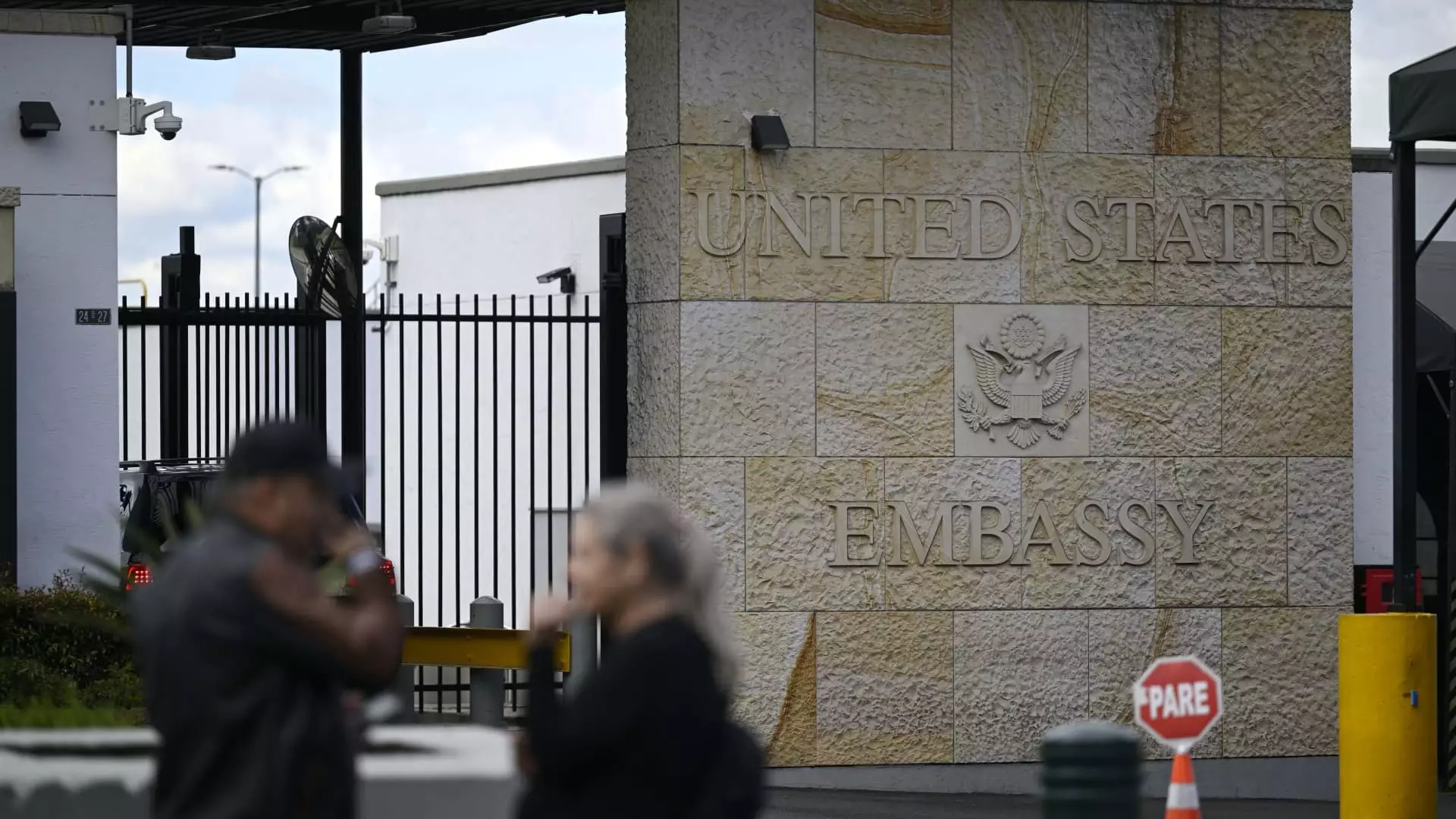In a move that has raised eyebrows across both domestic and international arenas, the administration of former President Donald Trump initiated a comprehensive overhaul of U.S. diplomacy. The directive to U.S. embassies worldwide to prepare for substantial staff reductions was indicative of a broader strategy aimed at reshaping the diplomatic landscape to align more closely with Trump’s populist “America First” ethos. This decisive action was not merely about trimming budgets; it represented an ideological commitment to recalibrating how American diplomacy operates, stripping it of what Trump and his allies deemed excessive bureaucracy and disloyalty.
According to sources familiar with the situation, embassies were instructed to reduce their staff—both U.S. diplomats and local employees—by as much as ten percent. Such cuts inevitably impact the operational capacity of these embassies, creating a ripple effect that jeopardizes their ability to effectively engage in the complex and nuanced world of international relations. This request culminated in a mandated submission of staff lists to the State Department, where future actions would be deliberated—a familiar scenario that placed the intricacies of international diplomacy in the hands of political machinations.
The implications are profound; U.S. embassies employ a blend of American diplomats and locally hired staff, who are critical to day-to-day operations and local insights. The potential loss of both categories could hinder the United States’ ability to navigate diplomatic challenges and maintain vital relationships abroad.
Adding another layer to the ongoing changes, recent reports indicated that approximately sixty contractors within the State Department’s Bureau of Democracy, Human Rights, and Labor were abruptly terminated. This situation underscores a much larger trend within the Trump administration, characterized by a willingness to dismantle or significantly reduce programs and offices deemed redundant or non-essential to its foreign policy objectives. This line of action raised concerns about the U.S. commitment to human rights and democracy globally, challenging the established role of the U.S. as a leader in these areas.
Statements from State Department officials during this time often lacked transparency, with an unwillingness to comment on internal personnel matters. The stark contrast between the rhetoric of diplomacy and the cuts being made illustrated a profound disconnect in the understanding of what constitutes effective foreign relations.
Trump’s executive order, which directed Secretary of State Marco Rubio to implement stringent measures on foreign service operations, further exemplified the administration’s approach. The mandate included threats of professional discipline for perceived failures in implementing the president’s agenda. This top-down approach raises questions about the integrity of diplomatic functions, insinuating that loyalty to Trump’s ideology could supersede professional expertise and the long-established norms that govern diplomatic conduct.
Moreover, the directive to possibly overhaul the Foreign Affairs Manual—a foundational document outlining the principles and regulations governing diplomatic missions—could signify a departure from traditional practices in favor of a more centralized control of foreign policy, thereby staving off dissenting views among diplomats and stakeholders.
Trump’s administration represented a stark deviation from the historical norms of U.S. diplomacy, notably through its personnel policies and emphasis on patriotism over professionalism. The pledge to “clean out the deep state” did not merely target bureaucratic inefficiency; it also threatened the impartiality and independence of foreign service officers. By creating an environment where loyalty to the president became a prerequisite for career advancement, the administration arguably compromised the foundational ethos of diplomacy—serving U.S. interests while engaging constructively with the global community.
In the wake of these structural changes, the future of U.S. diplomacy became a point of contention. Organizations that once thrived under a more balanced approach to governance now found themselves questioning the very essence of their missions. As the repercussions of these staff reductions reverberated through the halls of American diplomacy, it became abundantly clear that the path forward would require a confrontation with both the ideological divides they inspired and the institutional challenges they created.


Leave a Reply